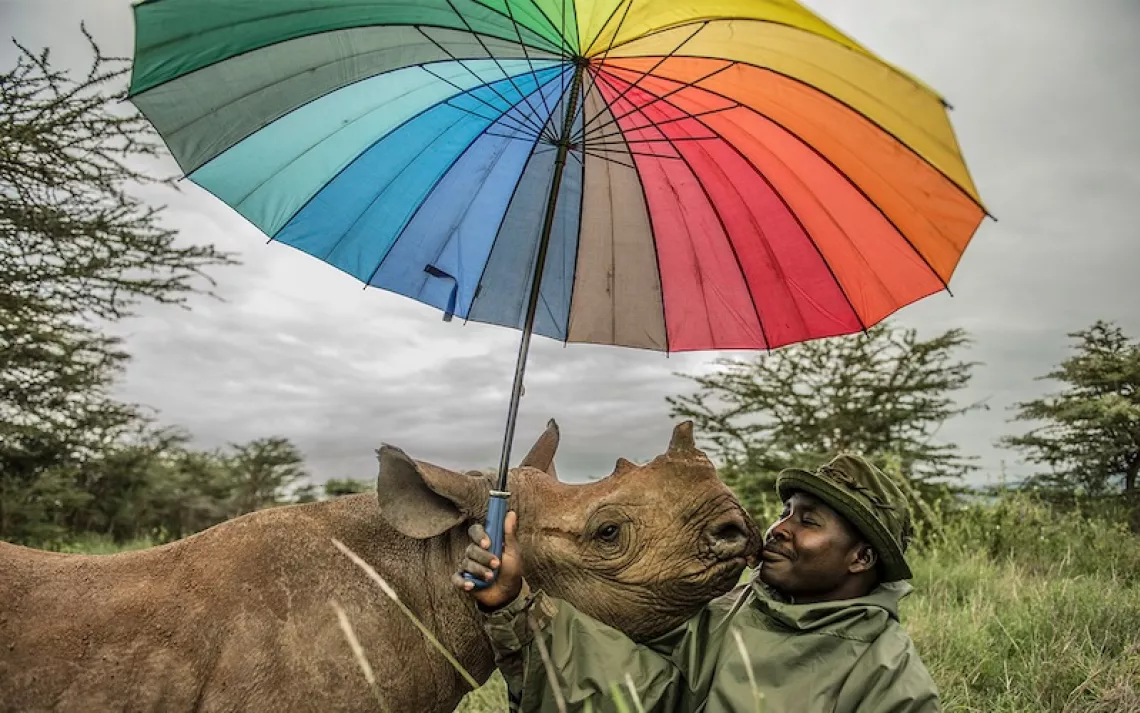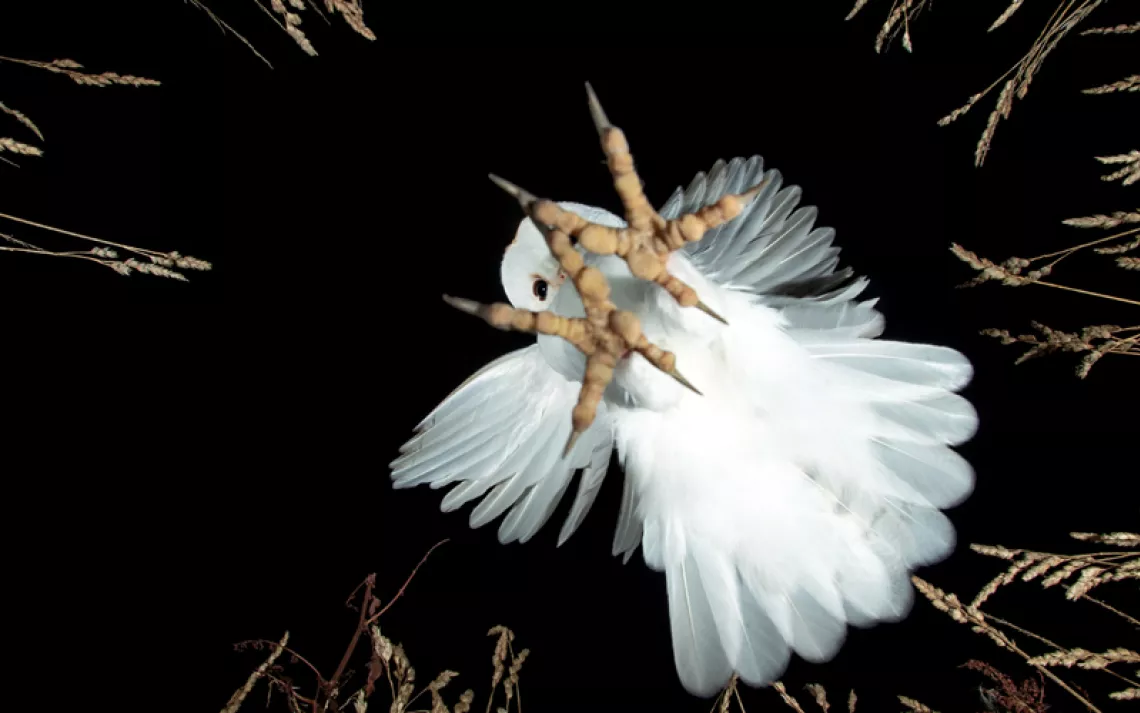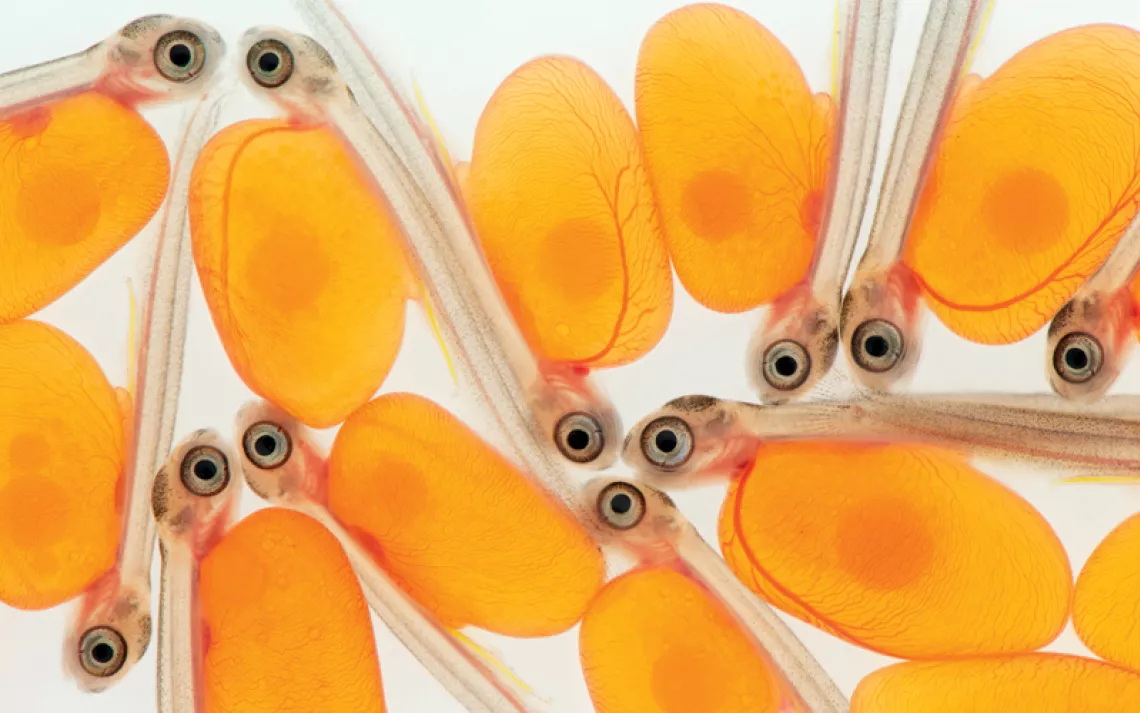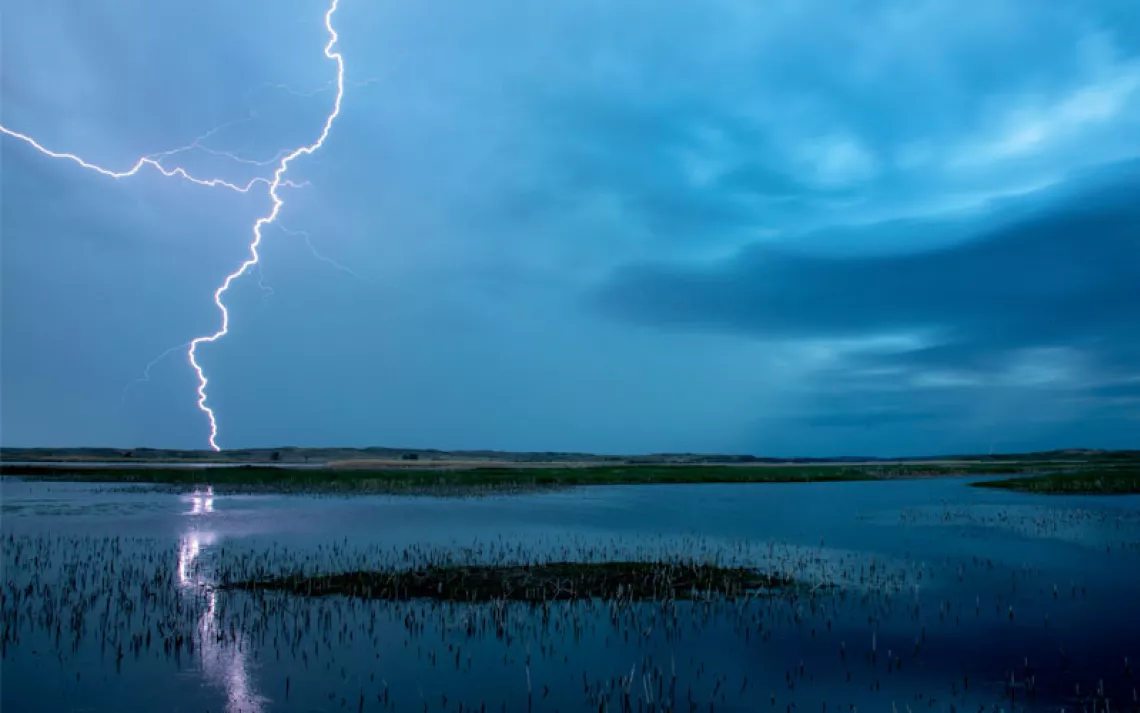Of Bait Balls and Marine Giants: The Stories Behind Some of This Year’s Best Underwater Photographs
With these amazing images you’ll find a blend of conservation, discovery, and patience
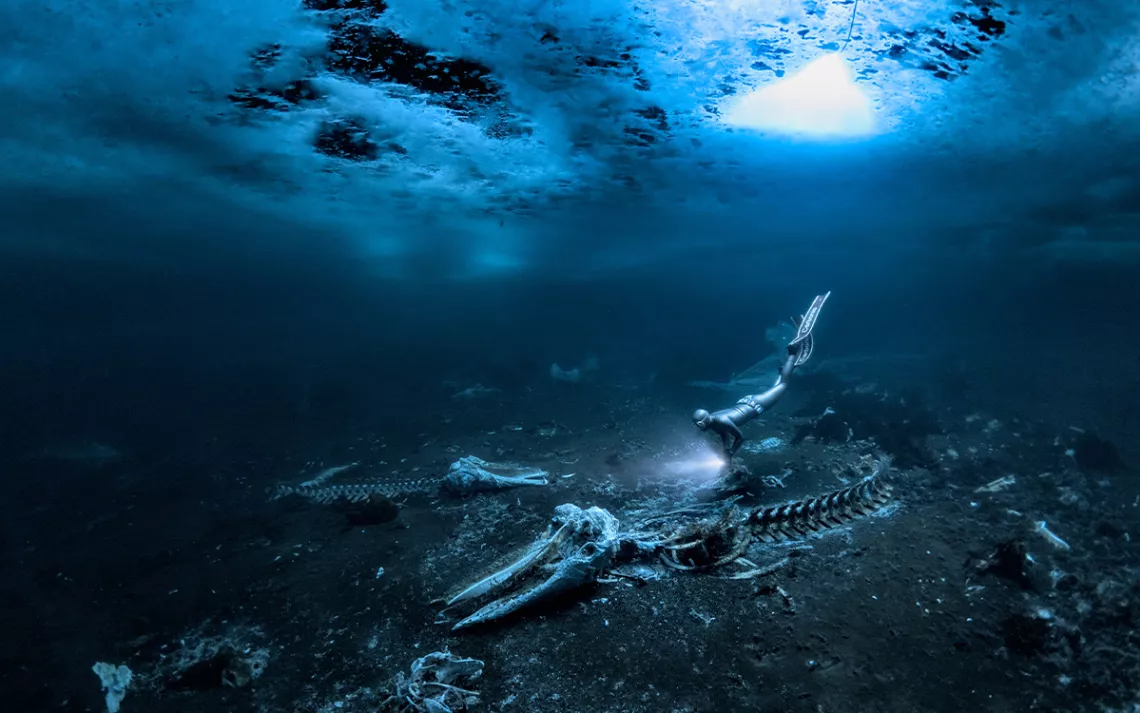
“Whale Bones,” the winning image of the Underwater Photographer of the Year 2024, made in Greenland by Swedish photographer Alex Dawson.
Photographer Nuno Sá has spent more than 20 years capturing award-winning footage in the Arctic, Antarctic, and equatorial waters in between. “I fell in love with the ocean and want to live life in contact with the ocean,” Sá told Sierra. “Nowadays, I spend most of my time traveling around the world.”
In Norway’s fjords, the Azores archipelago, and Patagonia’s open water coasts, he swims alongside the ocean’s largest beings: sharks, seals, and many species of whale, including whale sharks, humpbacks, orcas, rights, and blues. “I specialize in encounters in the blue,” he said. “In working with pelagic stories.”
One day he received a call from a network of marine biologists: A “goliath” had turned up close to his home in Lisbon. He sped to the sands of Costa da Caparica, where an enormous sperm whale had beached itself. When he got there, he found a crowd of swimmers trying to help the enormous mammal. In the shallow waters, Sá watched for hours as beachgoers attempted to push the laboring whale, which had been wounded in a collision with a ship, out to sea. Hours later, the giant died.
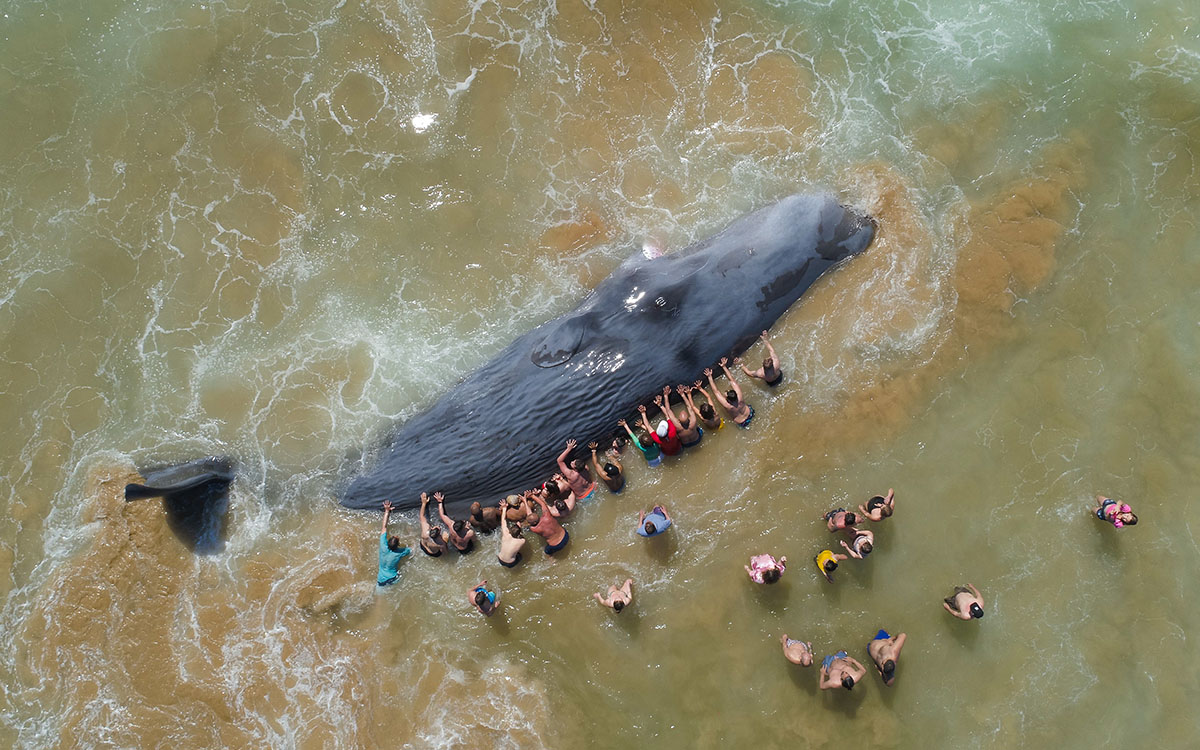
“Saving Goliath,” the winning image of the “Save Our Seas Foundation” Marine Conservation Photographer of the Year award, captured by Portuguese photographer Nuno Sá.
“I thought it was such an amazing scene and such an impactful message that I could capture,” Sá said. He noted that an estimated 20,000 whales are killed each year in collisions with ships, with many more experiencing injuries. “I think, with photography, since you are creating an emotional connection for people to a character, you really should take the opportunity to tell the whole story, the same way as you approach a documentary.”
Sá’s photograph of the scene, which he titled “Saving Goliath,” earned him the “Save Our Seas Foundation” Marine Conservation Photographer of the Year honor, one of 13 categories featured in the 2024 Underwater Photographer of the Year awards. More than 6,500 images from hundreds of photographers around the world were submitted to the competition, which was officially launched in 2014 in the United Kingdom. Earlier this year, the competition honored 130 photographs, with 12 of the 13 first-prize category winners representing different countries.
The stories behind the photographs are as diverse as the photographers themselves: a passion for crab-fishing monkeys, a patience for the music of bait balls, an open mind toward aquatic still lifes. What unites them all is the desire to protect and preserve the aquatic world by lifting it up through visual storytelling.
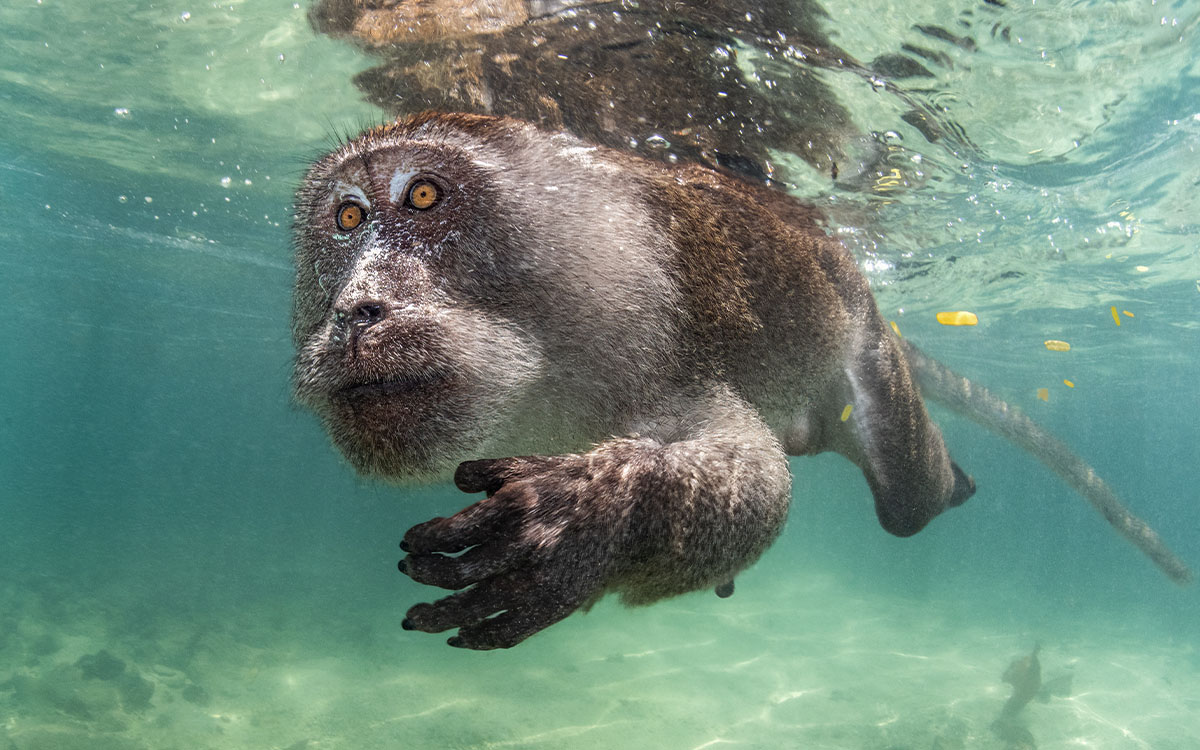
“Aquatic Primate,” third-prize winner in the Portrait category, captured by Kuwaiti photographer Suliman Alatiqi in Thailand.
Kuwaiti photographer Suliman Alatiqi followed his wanderlust to Thailand’s Monkey Bay with no specific agenda, guide, or return trip booked. During his research, he discovered that macaques, a notably aggressive primate native to the region, had never been photographed while hunting for crabs underwater. “It was kind of a long shot, but I like to give a chance to some of these long shots,” Alatiqi said. “Every once in a while, one of them works out pretty well.”
Case in point: an alpha male of a particular clan of macaques with whom Alatiqi became uniquely acquainted. “I don’t know if he just didn’t care about me, or if he somehow liked me,” Alatiqi said. “But there was definitely a connection. They were really relaxed around me.”
Gradually, through measured interactions with the monkeys, Alatiqi became more accustomed to their routine, inclinations, and favorite fishing locations. The day before he returned home, Alatiqi snapped what would later win third prize in the competition’s “portrait” category: an image of the alpha male scavenging for crabs.
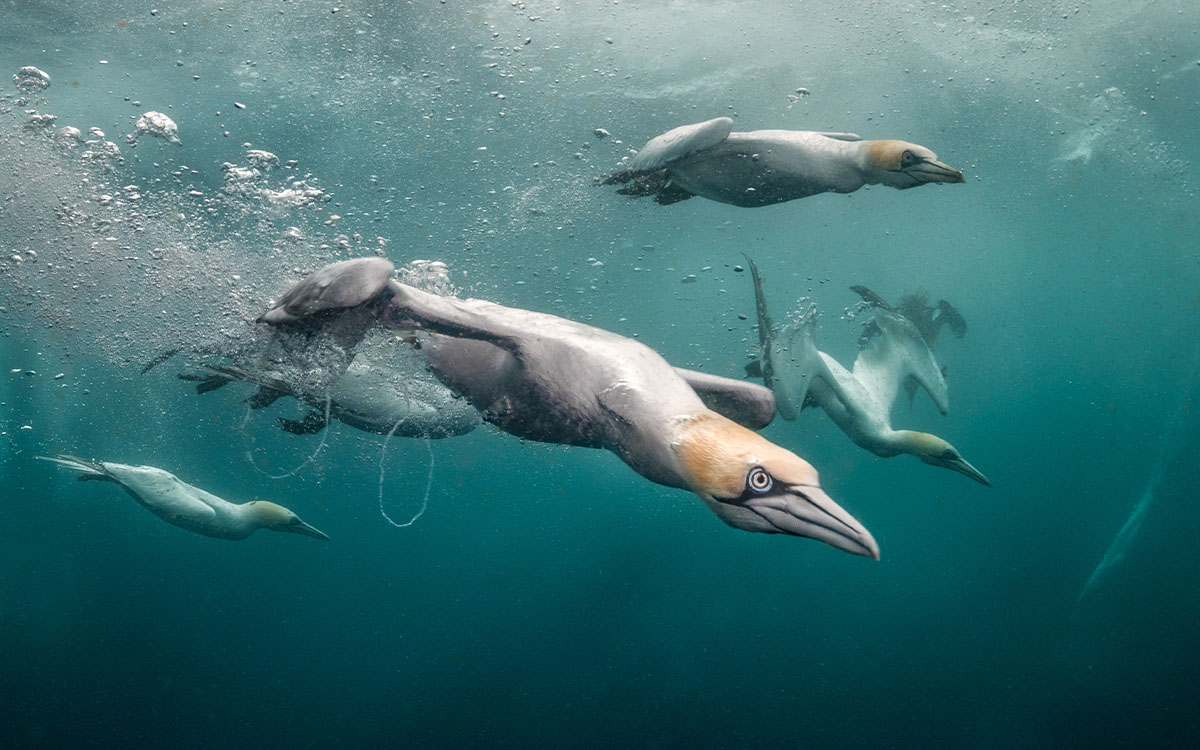
“Divebomb,” winner of the British Waters Wide Angle category, captured by American photographer Kat Zhou in Shetland, UK.
In the Shetland waters of the UK, Kat Zhou found herself swimming amid a northern gannet feeding frenzy, dive-bombing herring in the cold Shetland waters. Under the waves, her camera pointed up, Zhou was ready to capture the moment her favorite bird submerged. “They have this very dinosaur look to their faces,” she said. “And they can dive 72 feet deep. It’s even cooler when you see the way they move underwater and swim, a little bit prehistoric.”
Shetland’s waters, she said, are just one of the United Kingdom’s many “hidden gems that are mostly only visited by local divers. One of the things I like to do [in my photography] is showcase places that aren't really known to everyone.”
Snapping thousands of photographs while in the water, Zhou, who is from California, returned to the mainland with “Divebomb,” the image that went on to win the British Waters Wide Angle category’s first prize. “I just want to encourage more people internationally to try diving and diving in the UK, because I do think it's a very special place,” she said.
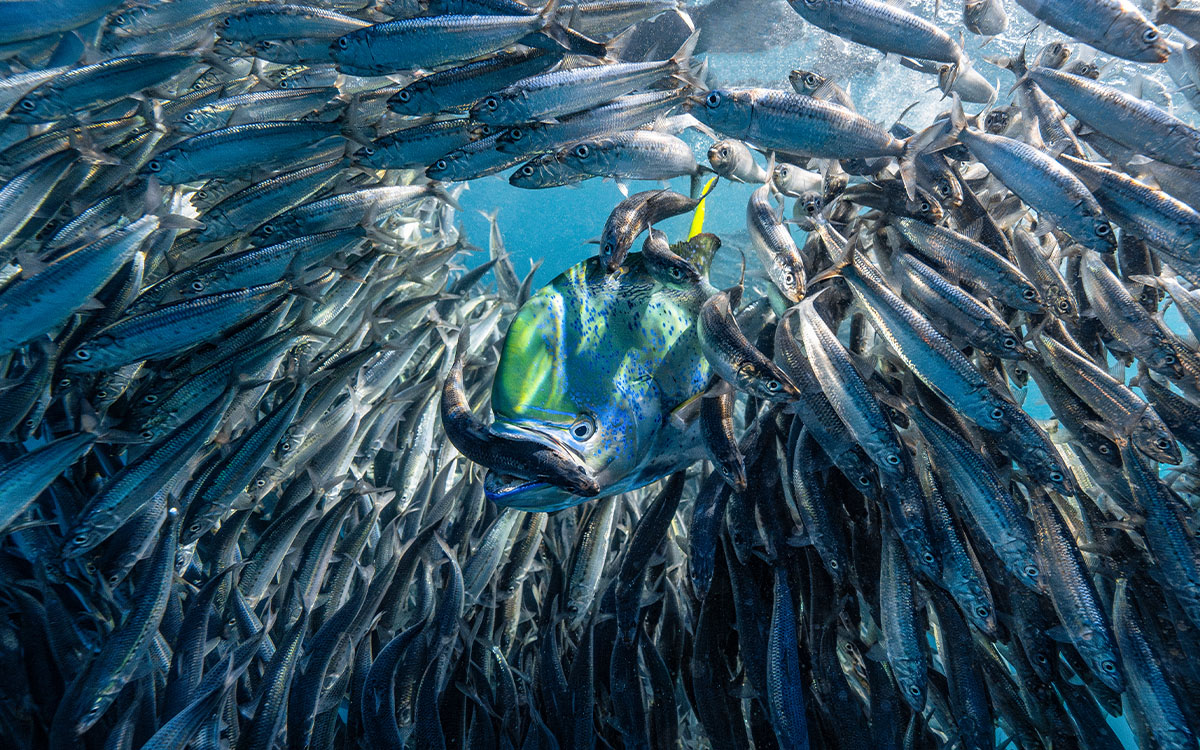
“Window of Opportunity,” winner of the Up & Coming Photographer of the Year category, captured by American photographer Lisa Stengel in Mexico’s Magdalena Bay.
In Mexico’s Magdalena Bay—where warm waters in November, much warmer than usual, had cultivated an increased amount of feeding activity—sardines create “bait balls” as they evade mahi-mahi, sea lions, and striped marlins. Lisa Stengel had seen something like it before—in the frigid waters of Norway, where thousands of herring swam themselves into a sphere chased by orcas and humpback whales. “You really have to be aware of your surroundings because it’s so chaotic,” Stengel said. “Aside from other animals, you need to watch out for other divers and boats.”
The experience prepared her well for navigating the frenzied waters off the coast of Mexico. Stengel, a US-based photographer, was awarded first prize in the Up & Coming Underwater Photographer category. “I was honing in on the sounds, really trying to focus and hear the fish,” she said. “You can hear them move and hit the sardines. You're constantly trying to play defense, trying to keep the bait ball from totally enveloping you. By making a point to listen, I could hear them move and anticipate the mahi-mahi coming through.”
See the rest of the category award winners below.
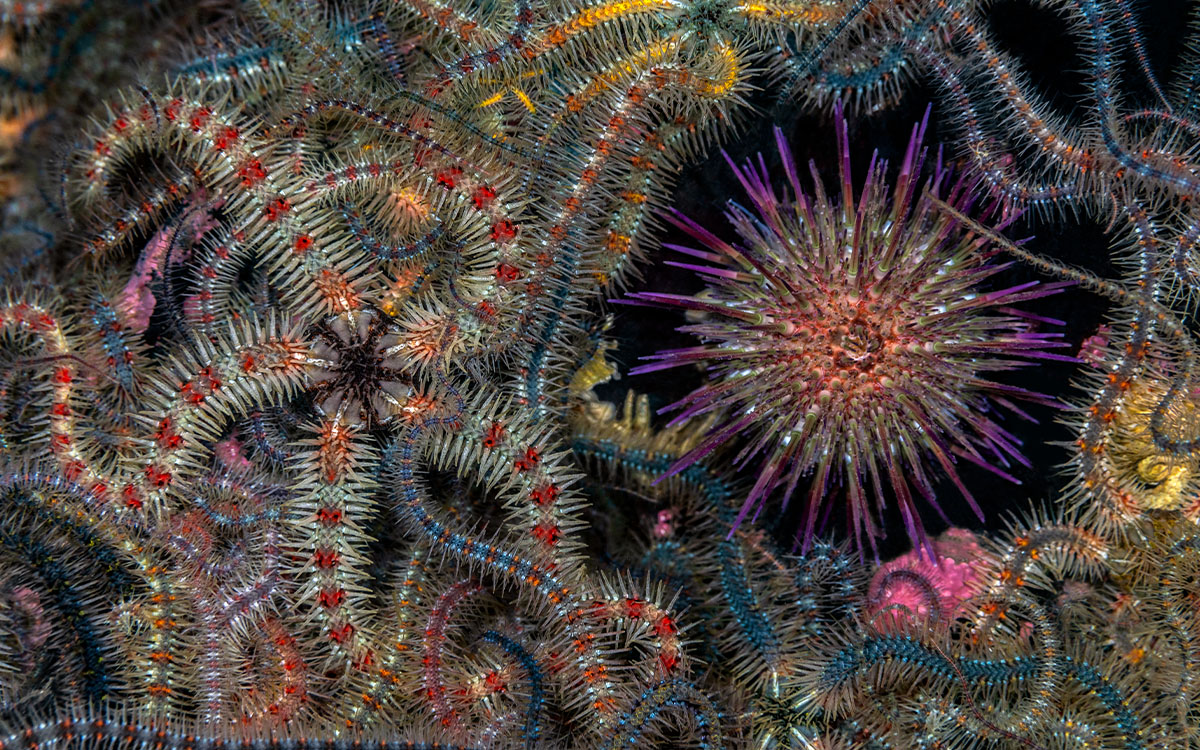
“Star Attraction,” winner of the British Underwater Photographer category, captured in Scotland by British photographer Jenny Stock.
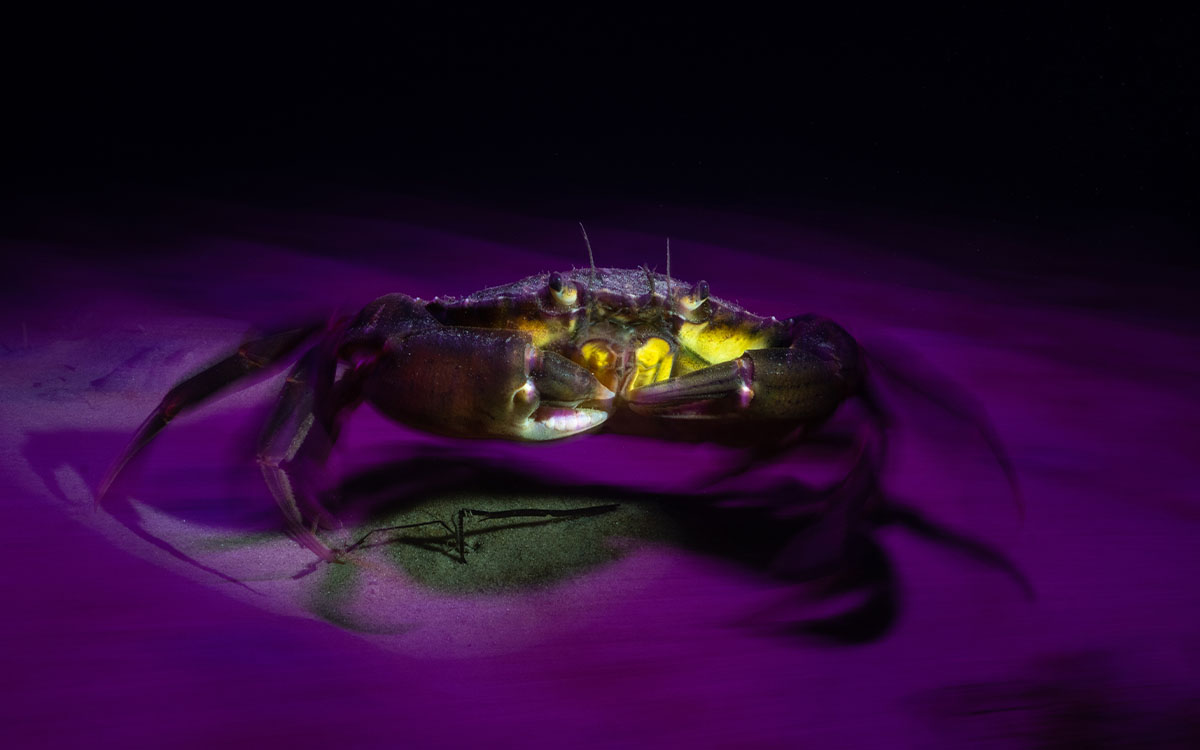
“Midnight Raver,” winner of the Most Promising British Underwater Photographer category, captured in England by British photographer Sandra Stalker.
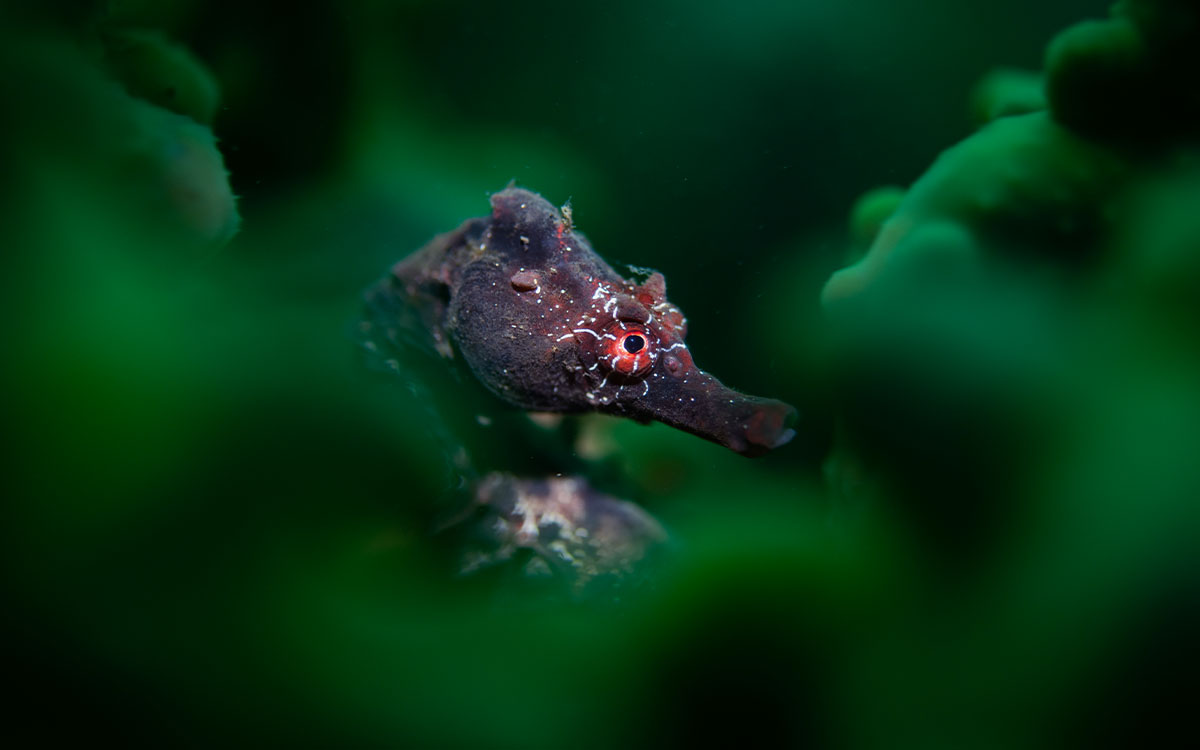
“An Abstract Portrait of a Potbelly Seahorse,” winner of the Macro Photography category, captured in Australia by Australian photographer Talia Greis.
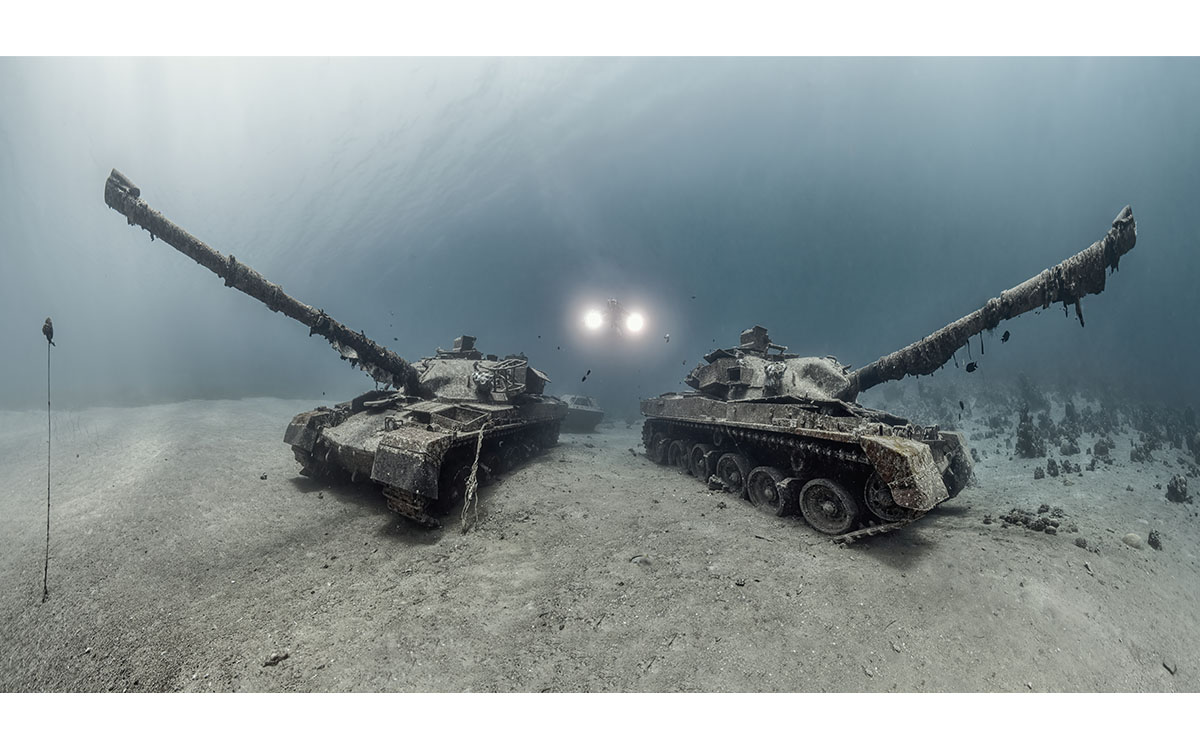
“Chieftain Tanks,” winner of the Wrecks category, captured in Jordan by American photographer Martin Broen.
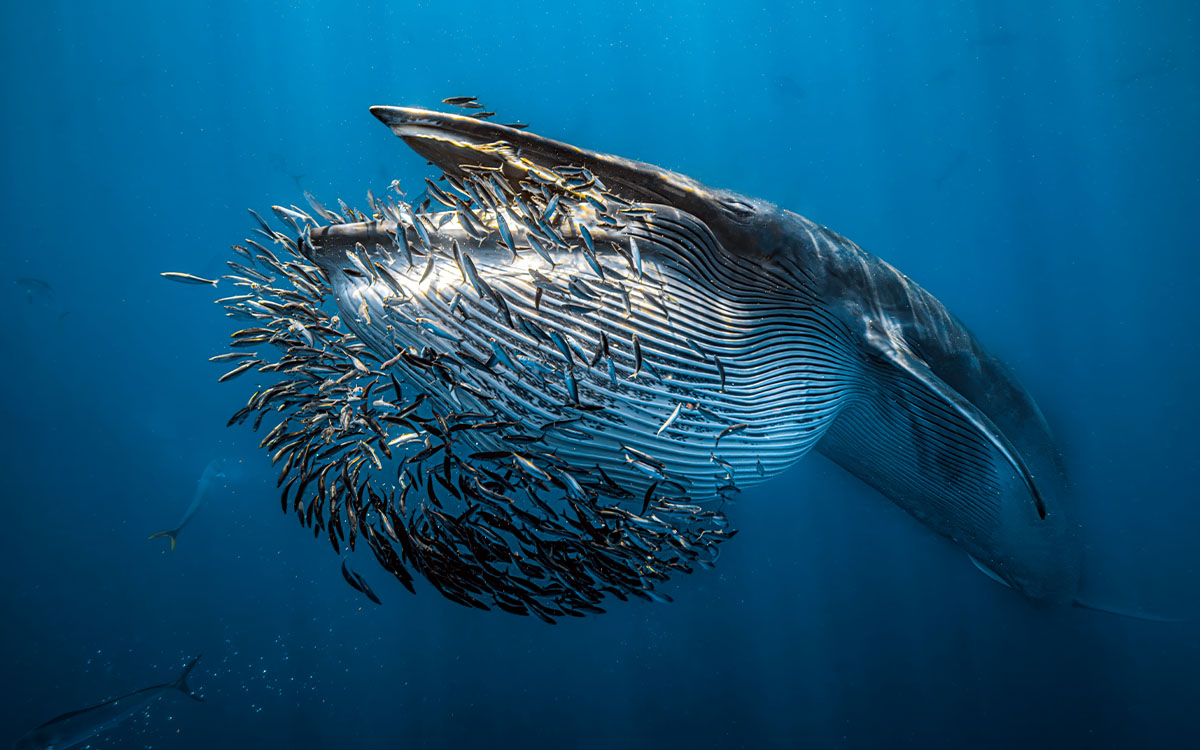
“The End of The Baitball,” winner of the Behaviour category, captured in Mexico by Spanish photographer Rafael Fernandez Caballero.
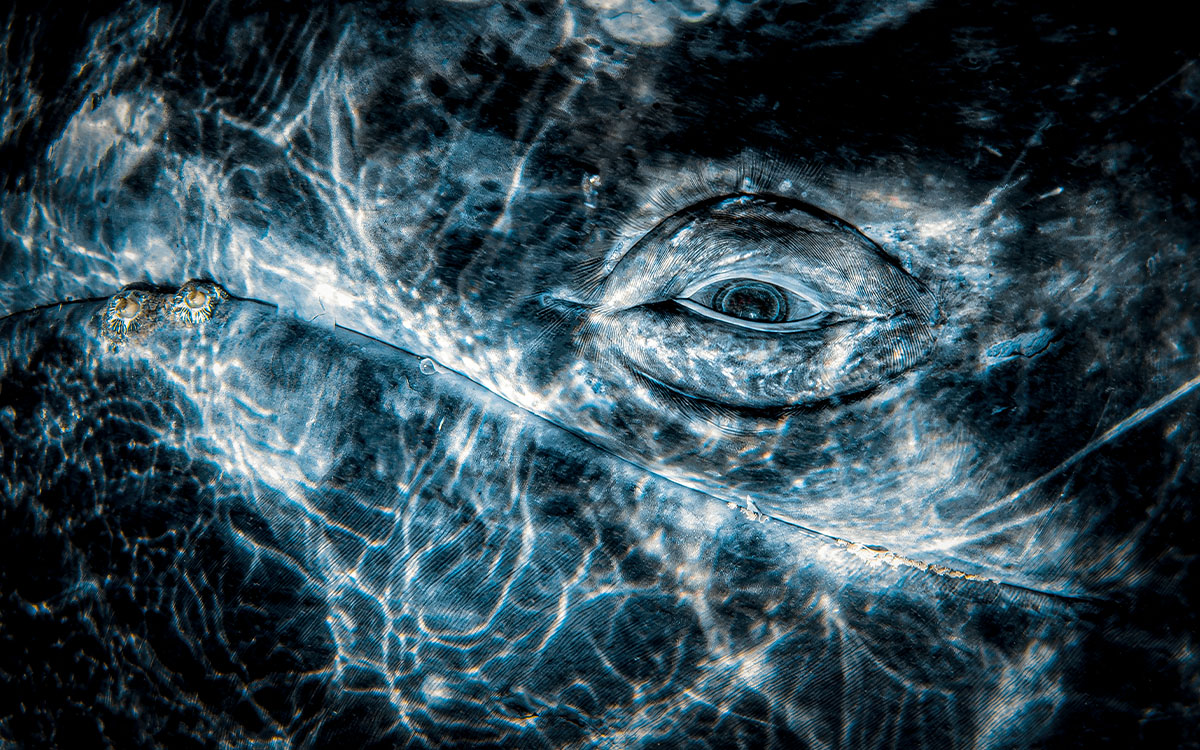
“Grey Whale Connection,” winner of the Portrait category, captured in Mexico by Spanish photographer Rafael Fernandez Caballero.
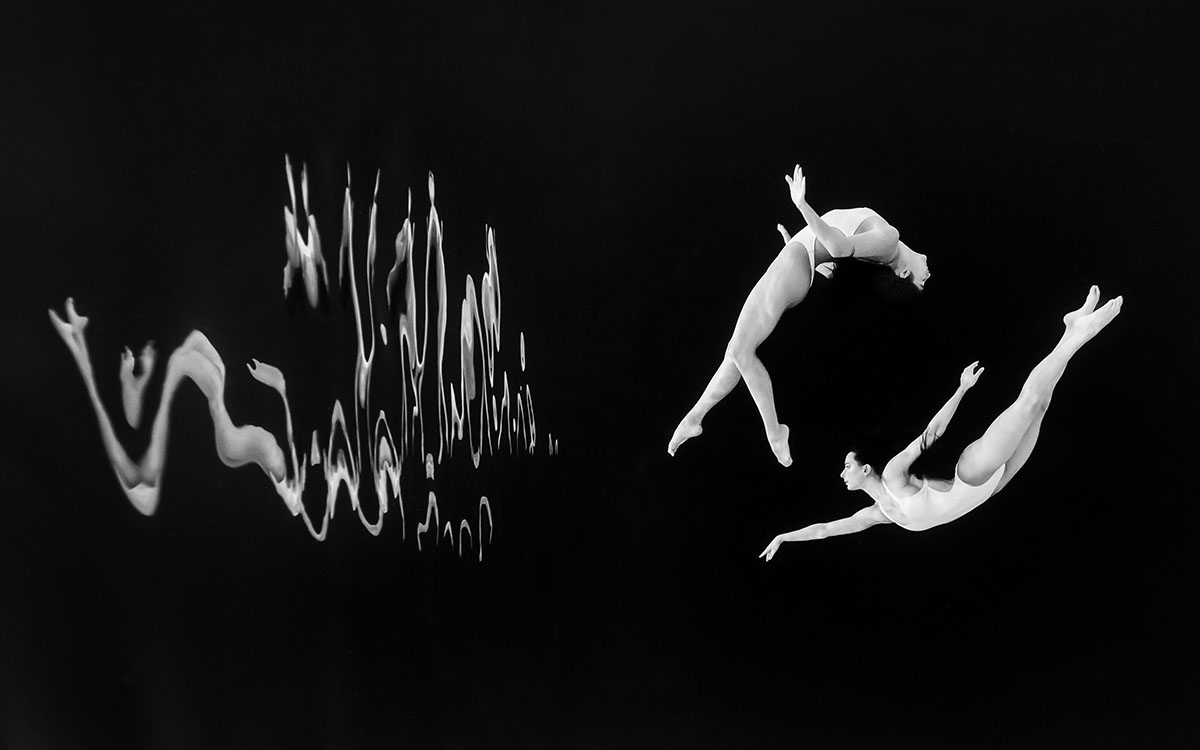
“Water Dancers,” winner of the Black & White category, captured in Australia by Australian photographer Jasmine Skye Smith.
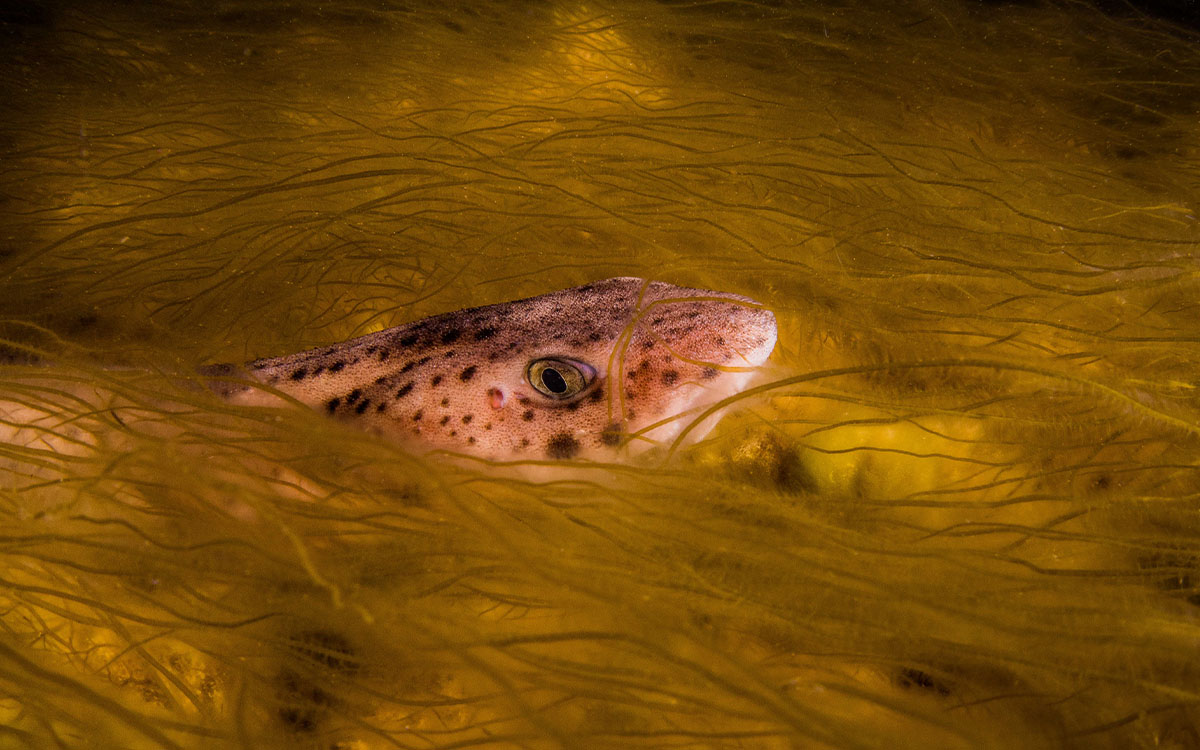
“Catshark in Bootlace,” winner of the British Waters Compact category, captured in the UK by English photographer Jon Bunker.
 The Magazine of The Sierra Club
The Magazine of The Sierra Club
